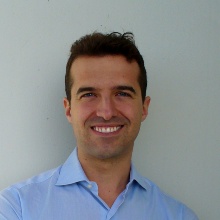My field of research is called algebraic geometry. This is the study of algebraic varieties, i.e. geometric objects which can be defined by polynomials. My main focus is a certain class of compact complex surfaces, the so-called K3-surfaces.
Algebraic geometry has the reputation of being very abstract and complicated. Is that true?
In many ways it is, since algebraic geometry has undergone several revolutions in which new methods and new notions have been introduced that have completely changed the language. The most famous example is the now fundamental notion of scheme invented by Grothendieck. Thanks to the new language, many results could be proved more rigorously and many errors could be detected and corrected. In my opinion, it is very important to consider the historical development of the theory in order to understand why many such abstract concepts actually have a concrete origin.
Now a bit more specific about your focus. Why are K3 surfaces important?
From the point of view of differential geometry, all K3 surfaces look the same: all K3 surfaces have the same underlying topological space, a compact simply connected real 4-manifold. From the point of view of complex or algebraic geometry, these surfaces are extremely interesting: they can be constructed in various ways and studied from numerous points of view. For this reason, various conjectures -- such as the Weil conjecture -- were first tested on K3 surfaces before being proved in full generality.
How did you start working with K3 surfaces?
One of the main results of 19th century classical algebraic geometry is that every smooth cubic surface in projective space contains exactly 27 straight lines. However, the question of how many straight lines a surface of degree higher than 3 can contain is much more difficult to answer. This is because cubic surfaces are rational surfaces, while quartic surfaces and surfaces of degree higher than 4 are K3 surfaces and surfaces of general type, respectively. The answer for quartic surfaces has been known since the 1940s thanks to B. Segre's work: a smooth quartic surface contains at most 64 straight lines. However, one claim in Segre's proof was wrong and was corrected only about 70 years later by my PhD supervisor M. Schütt and his coauthor S. Rams. In my doctoral thesis, I dealt with this problem. I studied the number of straight lines not only in the case of smooth quartic complex surfaces, but also in the case of surfaces defined over fields of arbitrary characteristic with isolated ADE singularities. The minimal resolution of such surfaces is still a K3 surfaces, hence my fondness for this class of varieties.
How did your research evolve after your PhD?
During my first postdoc in Mainz I became interested in lattices. A lattice is a symmetric bilinear form on a free finitely generated abelian group that takes values in the integers. Because of the Torelli theorem for K3 surfaces, the cornerstone of the theory, lattices play an important role. After the question of the number of straight lines on quartic surfaces, I turned to other enumerative problems, such as how many non-isomorphic Enriques surfaces a given K3 surface covers, or how many elliptic fibers to automorphisms a given K3 surface admits. These enumerative problems often lead to intriguing number theoretic questions. In order to classify all K3 surfaces that do not cover any Enriques surface, I collaborated with S. Brandhorst and S. Sonel to list all idoneal genera of lattices, a generalization of Euler's idoneal numbers: there are 557 of them -- perhaps two more, if some generalization of the Riemann hypothesis does not hold. Recently I have devoted myself to a generalization of K3 surfaces in higher dimension, the so-called hyperkähler manifolds. Quite a lot is still unknown about this class of manifolds. So far, I find most beautiful the connection between their symplectic automorphisms and some sporadic simple groups.
What do you enjoy about your work?
The most enjoyable thing about my work is definitely the opportunity to do something new every day. I also enjoy teaching: I find it fascinating when students get excited about the lecture topic and come up with exciting questions. And now that the Corona pandemic seems to be almost over, I am looking forward to traveling to real conferences again. I miss discussing mathematics with my colleagues with chalk in hand and not through Zoom.
Thank you very much for the interview.
Dr. Davide Cesare Veniani
Institut of Geometry and Topology


